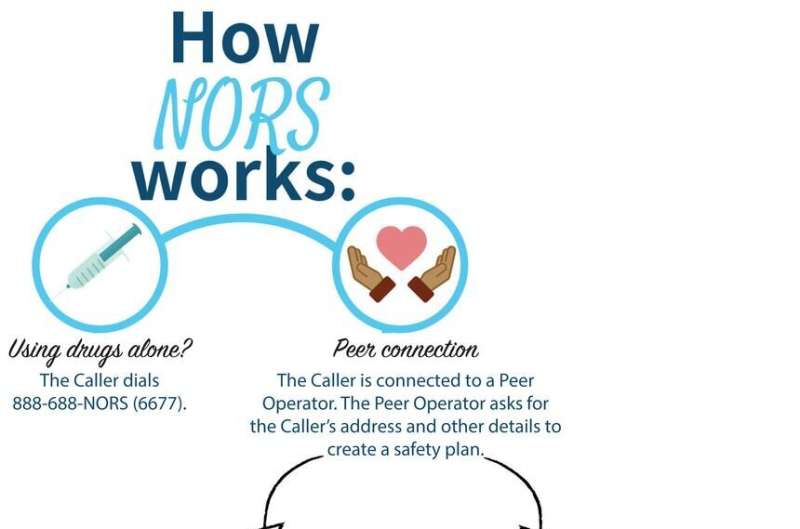National Overdose Response Service (NORS) operational flowchart. Credit: Reproduced with permission from NORS, Canadian Medical Association Journal (2022). DOI: 10.1503/cmaj.220579
Virtual overdose monitoring has the potential to reduce the risk of death from opioids and other substances by offering timely and anonymous access to emergency care. An article reviewing the latest evidence is published in CMAJ (Canadian Medical Association Journal).
Isolation and solitary use of opioids and other substances are the main driver of overdose deaths, as people are unable to seek help. Virtual overdose monitoring using phone lines or smartphone apps can connect people anonymously with people who can develop personalized emergency response plans and supervise substance use. These services operate 24 hours a day and have no restrictions on the type of substances or how they are used.
"Virtual overdose monitoring services are novel public health interventions capable of providing timely and accessible harm reduction and overdose prevention services for people who use substances," writes Dr. Monty Ghosh, an internist and addiction specialist, Department of Medicine, University of Alberta, Edmonton, and the Cumming School of Medicine, University of Calgary, Calgary, Alberta, with coauthors.
"Evidence, including pilot data from the National Overdose Response Service, suggests that virtual overdose monitoring services have promise as an adjunct to supervised consumption services in the continuum of care for people who use substances."
The authors call for more high-quality research to better understand potential benefits and risks of virtual overdose monitoring services.
More information: George Matskiv, Tyler Marshall, Oona Krieg, Dylan Viste and S. Monty Ghosh, Virtual overdose monitoring services: a novel adjunctive harm reduction approach for addressing the overdose crisis, Canadian Medical Association Journal (2022). DOI: 10.1503/cmaj.220579. www.cmaj.ca/content/194/46/E1568
Journal information: Canadian Medical Association Journal
Provided by Canadian Medical Association Journal
























